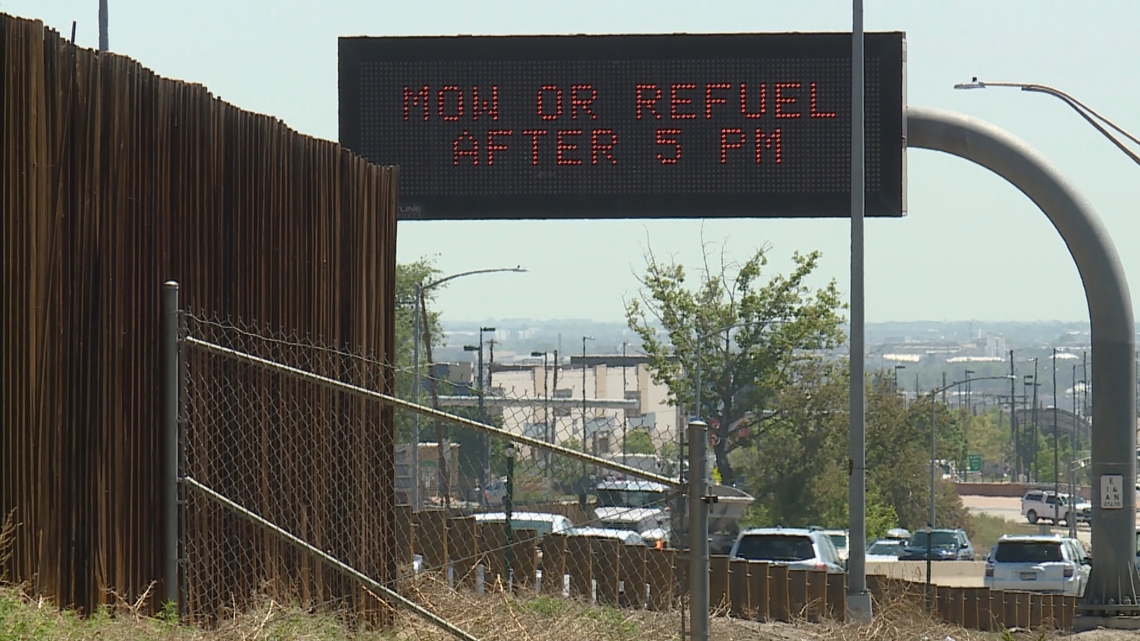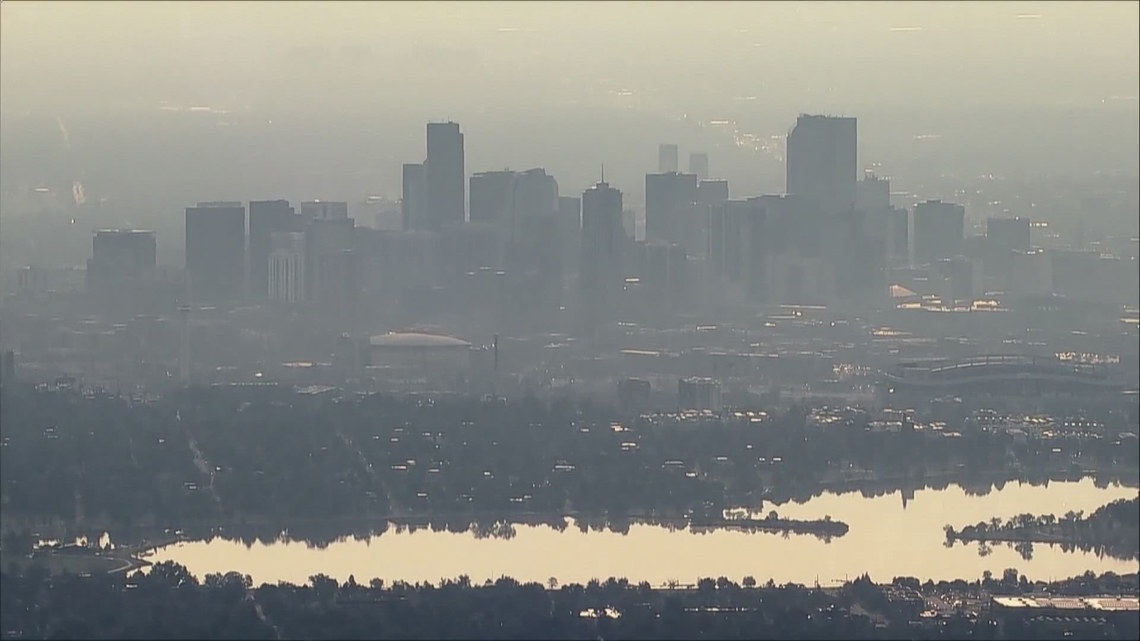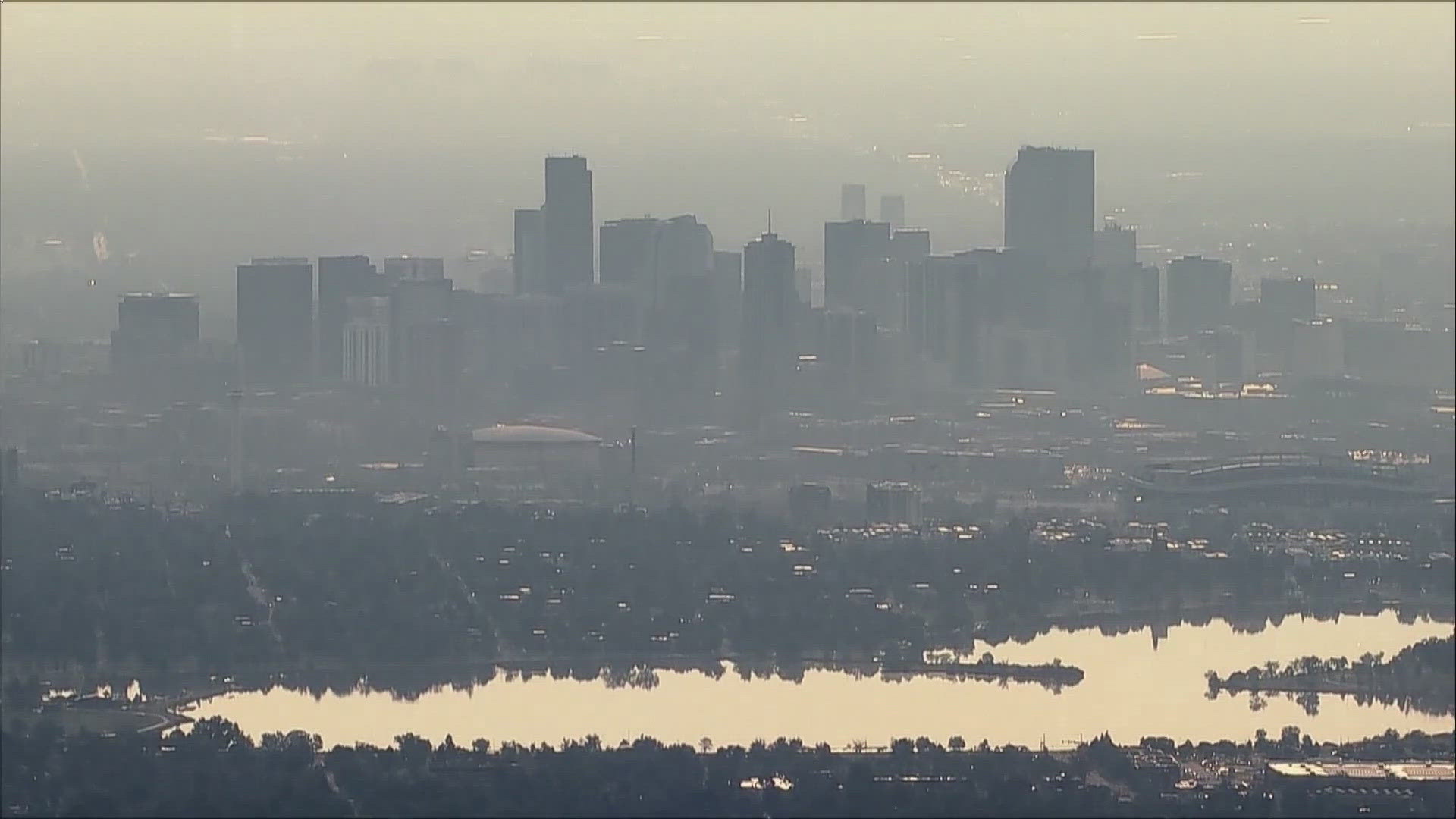DENVER — Memorial Day weekend is the kickoff to pool season on the Colorado Front Range, but it’s also the start of ozone pollution season and according to the American Lung Association, Denver’s air quality is the 6th worst in the entire country.
Commonly called ground-level ozone, it’s a secondary pollutant which means it’s not directly emitted into the air. Instead, it gets created when heat and sunlight cause a chemical reaction to the other pollutants that are directly emitted.
Those pollutants include motor vehicle exhaust and emissions from factories and oil and gas operations.
Since the warm sunshine is the catalyst, ozone season is when the weather is warmest from May 31 through the end of August.
Dangers of ozone
Ozone is a dangerous pollutant to breathe, especially for people with a preexisting respiratory issue, so when the ozone levels are high people are asked to remain indoors or at least limit their exposure to the outside air. The ozone molecule is unstable and does not last long indoors.
Short-term exposure to unhealthy levels of ozone pollution can cause symptoms, such as:
- Coughing.
- Eye, nose and throat irritation.
- Chest pains.
- Breathing difficulty.
- More frequent asthma attacks.
There are not many studies about long-term exposure to ozone, but it has been linked to a variety of poor health outcomes, including lung and cardiovascular disease and premature death.


Alerts and Forecast
The Colorado Department of Public Health and Environment will issue what’s called an Ozone Action Day alert when the ozone levels are expected to reach unhealthy levels. Ozone concentrations can be accurately forecast more than 24 hours in advance.
You can subscribe to receive direct alerts by text or by email. You can call the advisory hotline at 303-758-4848. The National Weather Service relays the alerts through their system.
Sunday was the first Ozone Action Day of 2024. There’s an average of 44 of them each summer. There was an unusually low number of alert days last summer (37) because of a cool and cloudy June.
There was a record 65 ozone action days in 2021 because of a very active wildfire season bringing in distant smoke from out west. Wildfire smoke can transport extra ozone pollution in from other areas and it can also contain some of the raw pollutants that contribute to the creation of local ozone.
Is it hazy?
Ozone is a microscopic and invisible molecule but when the concentrations are high enough, it can create a visible haze around the Front Range.


Most of the time it's the direct pollutants like nitrous oxides or volatile organic compounds in the air that makes the view hazy. However, the Front Range very rarely violates the EPA standards for those pollutants while it is in non-attainment for violating the ozone standard of 70 parts per million over an 8-hour average.
The air can often still appear to be relatively clear on dangerous ozone days so it’s important to stay aware of the air quality forecast this summer.
For instance, Wednesday is shaping up to be a classic ozone production day and there will likely be an ozone action day alert issued.
SUGGESTED VIDEOS: Colorado Weather

